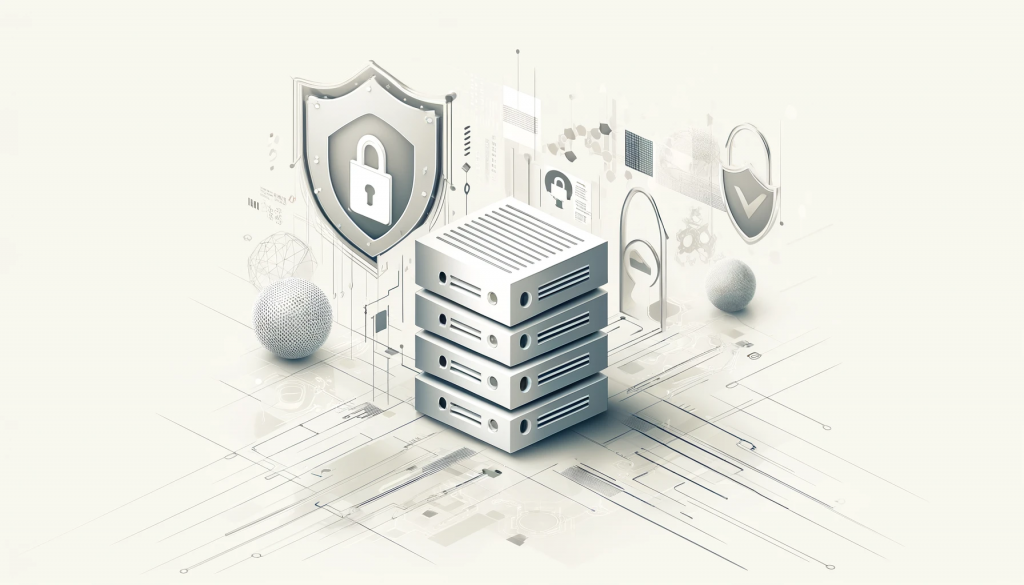
In today’s world, where information is a key resource for understanding and perceiving everything around us, server security is becoming increasingly necessary.
Your own server can be a repository of valuable data, both personal and business, so protecting it from cyberattacks is an extremely important task today.
What is own server security?
Own server security is a set of measures aimed at protecting the server from unauthorized access, data damage, and other cyber threats. Achieving a high level of security requires careful planning, constant monitoring, and timely software updates.
Why is it important to check server security?
As in many cases, the consequences of a cyberattack on a server can be devastating. The most common ones are:
- Data loss. Valuable data such as financial information, confidential documents, or personal data can be stolen or damaged.
- Financial losses. Data theft can lead to financial losses related to data recovery, fines for GDPR violations, and loss of reputation.
- Work disruption. A cyberattack can lead to server downtime, which can negatively impact your business operations.
- Reputation loss. A server breach can seriously damage your reputation and lead to loss of customer trust.
How to check server security?
Server security check can be divided into several stages, including information gathering, scanning and assessment, vulnerability remediation, monitoring, and continuous improvement.
First stage – information gathering.
For this you need to:
- Identify assets. Start by identifying all the servers you will be checking, including their operating systems, software, and data.
- Familiarize yourself with the infrastructure. Create a network map to understand how servers interact with each other and with the outside world.
- Identify threats. Conduct research on common cyber threats that could affect your servers, such as DDoS attacks, data theft, etc.
- Identify regulatory requirements. Ensure that you comply with all relevant industry standards and regulatory requirements regarding data security.
Second stage – scanning and assessment.
Here you need to follow these recommendations:
- Use vulnerability scanners. Run automated vulnerability scanners to detect known vulnerabilities in your software and operating systems.
- Conduct manual testing. Complement automated scanning with manual testing to detect unknown vulnerabilities and check the effectiveness of existing security measures.
- Analyze logs. Review server logs to detect suspicious activity, failed login attempts, and other signs of security breaches.
Third stage – vulnerability remediation.
At this stage, it is important to do the following:
- Create an action plan. Develop a priority action plan to address identified vulnerabilities, starting with the most critical ones.
- Install updates. Apply all available software and operating system updates to eliminate known vulnerabilities.
- Configure the firewall. Ensure that your firewall is properly configured to block unauthorized traffic and access.
- Strengthen passwords. Set strong passwords for all user and administrator accounts.
- Enable two-factor authentication. Add an extra layer of security by enabling two-factor authentication for all accounts.
Final stage – monitoring and continuous improvement.
Here it’s simple:
- Set up a monitoring system. Implement a security monitoring system to track server activity, detect threats, and respond to incidents.
- Regularly update security policies. Update your security policies to reflect new threats and best practices.
- Conduct regular checks. Perform regular security checks to ensure that your servers are continuously protected.
Additional recommendations
But that’s not all, and we have prepared a few additional tips for you to consider when checking the server:
- Data encryption. Encrypt confidential data both in storage and during transmission.
- Backup and recovery. Regularly create data backups and ensure you have a recovery plan in case of unforeseen circumstances.
- User training. Conduct cybersecurity training for users so they know how to act quickly and correctly in such situations.
Thus, as we see, thorough server security checking is a continuous process that requires constant vigilance and adaptation to new threats. By applying these tips described in our article today, you can significantly enhance the protection of your servers, data, and company as a whole.
And remember, cyber threats are constantly evolving, so it’s important to stay informed about new threats and improve your protection methods.
Protect your data and take care of their security!

Leave a Reply